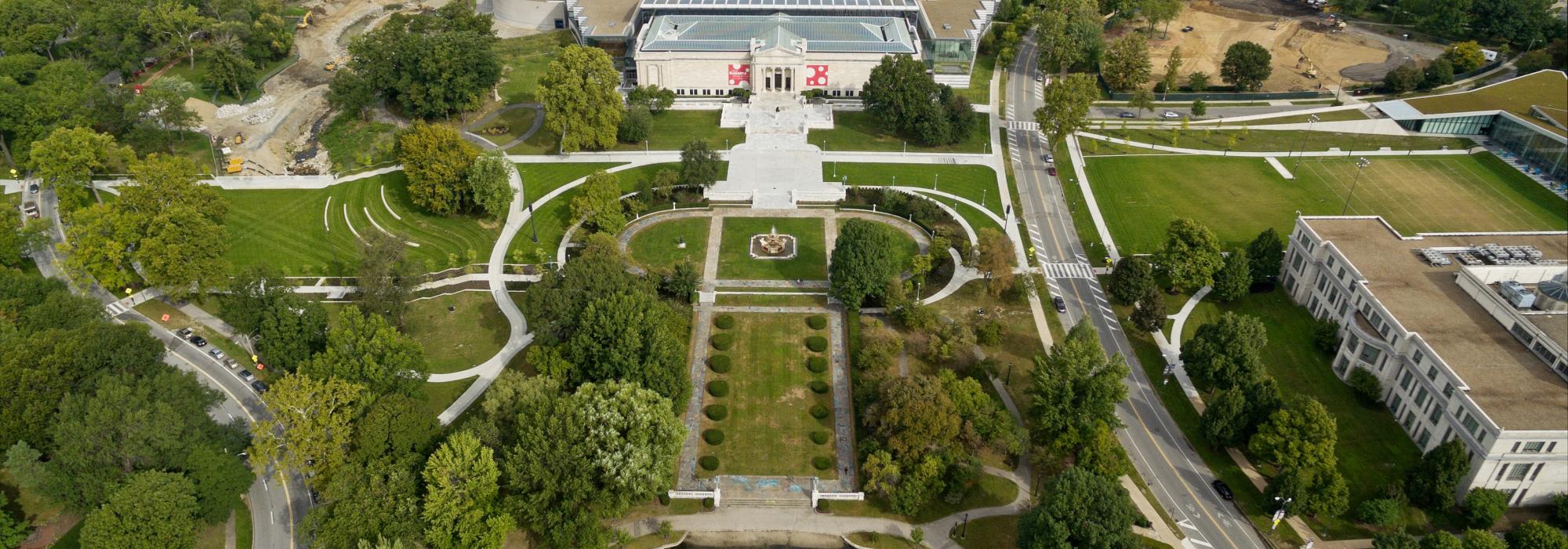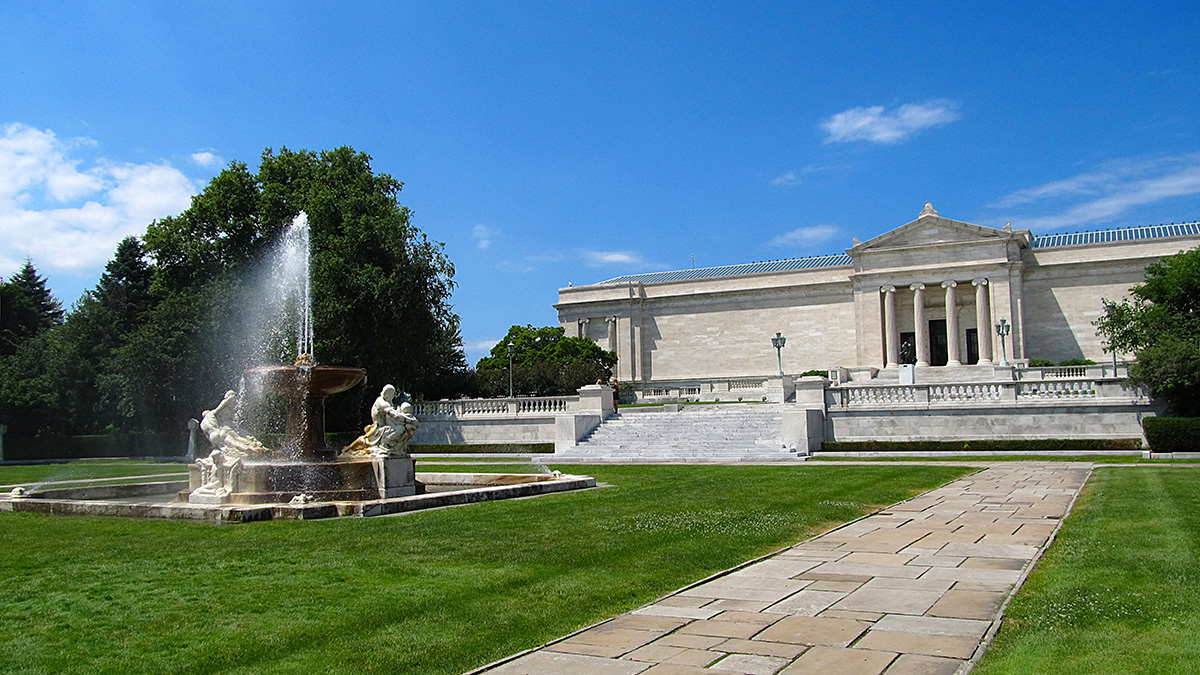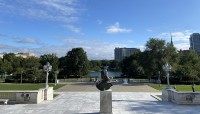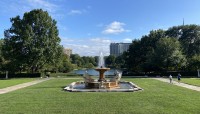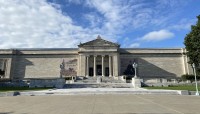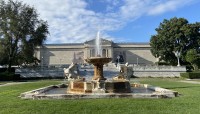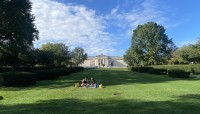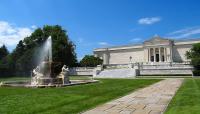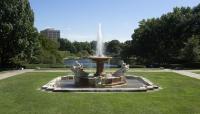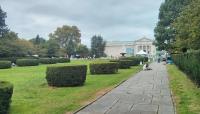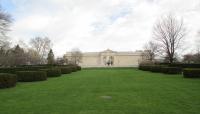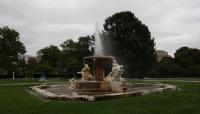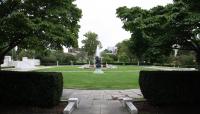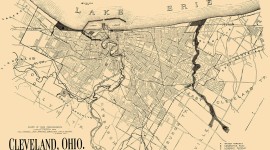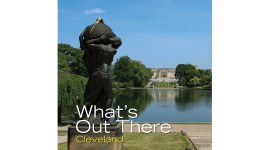Landscape Information
This garden occupies land that was originally part of a 63-acre parcel donated, in 1882, to the City of Cleveland for use as a park by industrialist Jeptha Wade. A smaller adjoining segment, initially withheld as a reserve, was donated by Wade’s grandson, Jeptha Wade II, to the city for the creation of the Cleveland Museum of Art, which opened in 1916. In 1925 the Garden Club of Cleveland hired Frederick Law Olmsted, Jr., of Olmsted Brothers to beautify the institution’s surrounding parkland. The design, completed by the firm's Edward Whiting and Leon Zach in 1928, included a formal garden that fronted the museum. Landscape architect Donald Gray, who had worked for Olmsted Brothers before establishing his own practice in Cleveland in 1920, also contributed to the park’s design.
This formal garden consists of two outdoor rooms that descend along a central axis bookended by the museum’s southern façade terrace and the Wade Park Lagoon. The first room is the Zodiac Garden, an oval lawn fitted onto a plateau and bound by stepped terraces. Contained by marble curbing, the lawn’s shape is strongly defined by a dense border of yew hedges. Twelve stone plinths, created by artist Chester Beach and representing each sign of the zodiac, frame the lawn’s curvatures. A single-tier fountain, also created by Beach and named Fountain of the Waters, is situated at the center of the green, flanked by two figurative sculptures. Sandstone walking paths descend from the museum’s terrace to trisect the lawn before continuing southward to define an adjoining mall bordered by yew hedges. As it gently slopes towards the lagoon, the mall’s rectangular shape is further strengthened by two framing, parallel rows of topiary that gradually decrease in size. In 2002, Behnke Associates, Inc. rehabilitated the garden, as did the firm Sasaki in 2018. Sasaki’s Nord Family Greenway project connected the Fine Arts Garden with neighboring institutions and the Doan Brook. An integral part of Wade Park, the garden is a contributing feature of the Wade Park Historic District listed in the National Register of Historic Places in 1982.



